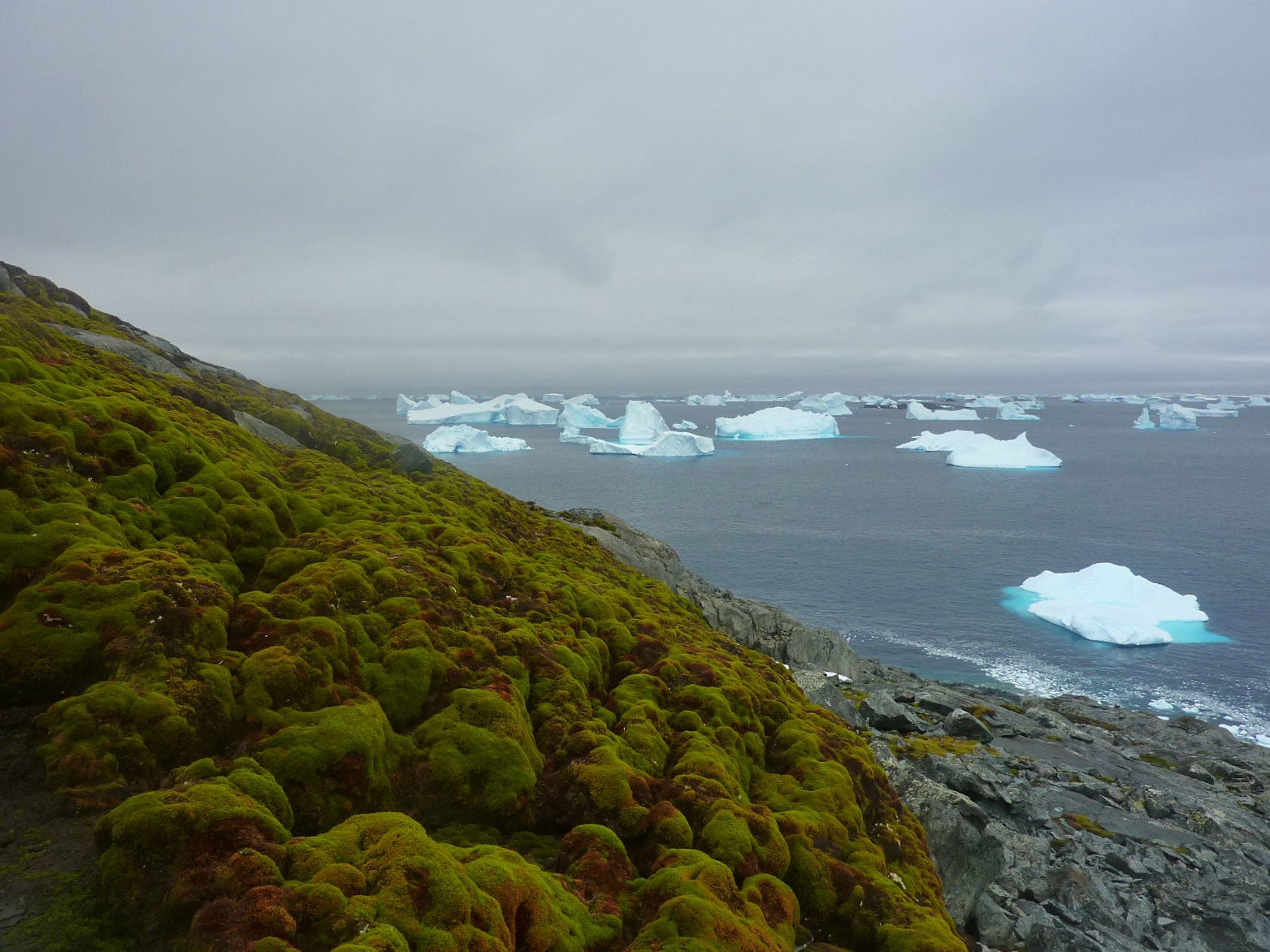Antarctic turning green as global warming triggers moss explosion
Scientists say the frozen continent is likely to 'alter rapidly under future warming, leading to major changes in the biology and landscape of this iconic region'

Your support helps us to tell the story
From reproductive rights to climate change to Big Tech, The Independent is on the ground when the story is developing. Whether it's investigating the financials of Elon Musk's pro-Trump PAC or producing our latest documentary, 'The A Word', which shines a light on the American women fighting for reproductive rights, we know how important it is to parse out the facts from the messaging.
At such a critical moment in US history, we need reporters on the ground. Your donation allows us to keep sending journalists to speak to both sides of the story.
The Independent is trusted by Americans across the entire political spectrum. And unlike many other quality news outlets, we choose not to lock Americans out of our reporting and analysis with paywalls. We believe quality journalism should be available to everyone, paid for by those who can afford it.
Your support makes all the difference.The Antarctic is turning green with rising temperatures having a “dramatic effect” on the growth of moss in the frozen continent, scientists have discovered.
Since 1950, temperatures in the Antarctic Peninsula have risen by about half a degree Celsius each decade – much faster than the global average.
And growth rates of moss after about 1950 have been running at four to five times the level before that year, according to a study by UK-based researchers who studied three sites across a 1,000km stretch of the peninsula.
Scientists are currently considering whether to formally adopt 1950 as the start of a new geological epoch called the Anthropocene because of the astonishing global effects that modern humans are having on the Earth.
In addition to climate change, the extinction of animal species, plastic waste – there could be more of that than fish in the sea by 2050 – ash from fossil fuels and radioactive particles from nuclear bomb tests will all leave a permanent record in the planet’s future rocks.
Researchers from Exeter and Cambridge universities and the British Antarctic Survey studied a 150-year period of moss growth in the Antarctic Peninsula by taking samples from the material laid down each year.
Dr Matt Amesbury, who took part in the study, told The Independent: “What we found were these large, dramatic changes occurring in all of our cores.
“On average, in terms of the growth rate of moss before and after 1950, there has been a four to five-fold increase in average growth rates.”
He added that change had kicked in at different times depending on the location between 1950 and 1980.
“Between 1950 and 2000 in the Antarctic Peninsula, temperatures increased by half a degree per decade on average,” said Dr Amesbury, of Exeter University.
“The reason we are so confident our mosses are responding primarily to temperature is because of the very wide-scale response we see in our moss banks … from three different sites 1,000km across the Antarctic Peninsula.”
The researchers, who reported the results of their study in an open-access paper in the journal Cell Biology, also looked into how sensitive the moss would be to further warming.
“The results of that analysis lead us to believe there will be a future ‘greening’ of the Antarctic and a further increase in moss growth rates.
“We are likely to see moss particularly colonising new areas of ice-free land created by the warmer climate … and particularly things like glacier retreat.”
However the Antarctic has a long way to go before its appearance is radically transformed.
“There is 0.34 per cent of the entire Antarctic continent that is predominantly ice-free,” Dr Amesbury said.
“Whilst we are talking about a greening and our results show quite strongly there is likely to be increased moss growth in terms of the rate and spatial coverage, as a whole the Antarctic will remain a white place for a long time to come.
“But these vivid splashes of green in the ice white are something that we should be increasingly aware of.”
Those who doubt global warming is already happening should take note.
“The Antarctic is perhaps thought of as a very remote region, one of the last places that might be relatively untouched by humankind,” Dr Amesbury said.
“But this is, absolutely, further evidence the ecosystems in the Antarctic, particularly the Antarctic Peninsula, are responding to human-induced climate change.”
Fellow research Professor Dan Charman, also from Exeter, said the changes were likely to be significant.
“The sensitivity of moss growth to past temperature rises suggests that ecosystems will alter rapidly under future warming, leading to major changes in the biology and landscape of this iconic region,” he said.
“In short, we could see Antarctic greening to parallel well-established observations in the Arctic.
“Although there was variability within our data, the consistency of what we found across different sites was striking.”
The researchers, who were funded by the Natural Environment Research Council (NERC), now plan to examine core records dating back over thousands of years to test how much climate change affected ecosystems before human activity started causing global warming.
Join our commenting forum
Join thought-provoking conversations, follow other Independent readers and see their replies
Comments